Leaf miners is a collective term used for larvae of many insect pests that feed between the layers of leaf tissue. It includes the larvae of the order Lepidoptera, Hymenoptera (sawfly larvae), Coleoptera (beetle and weevil grubs), and Diptera (maggots and true flies).
Leaf miner larvae live in the leaves and between the layers of leaf tissues. The leaf tissues protect them and make it easier for the leaf miners to make big blotches (no chlorophyll) and trails on the leaf surface.
While the leaf miner damages the leaf surface, it becomes necessary for the growers to get rid of them. Because their feeding damage leads to reductions in crop produce quality and quantity.
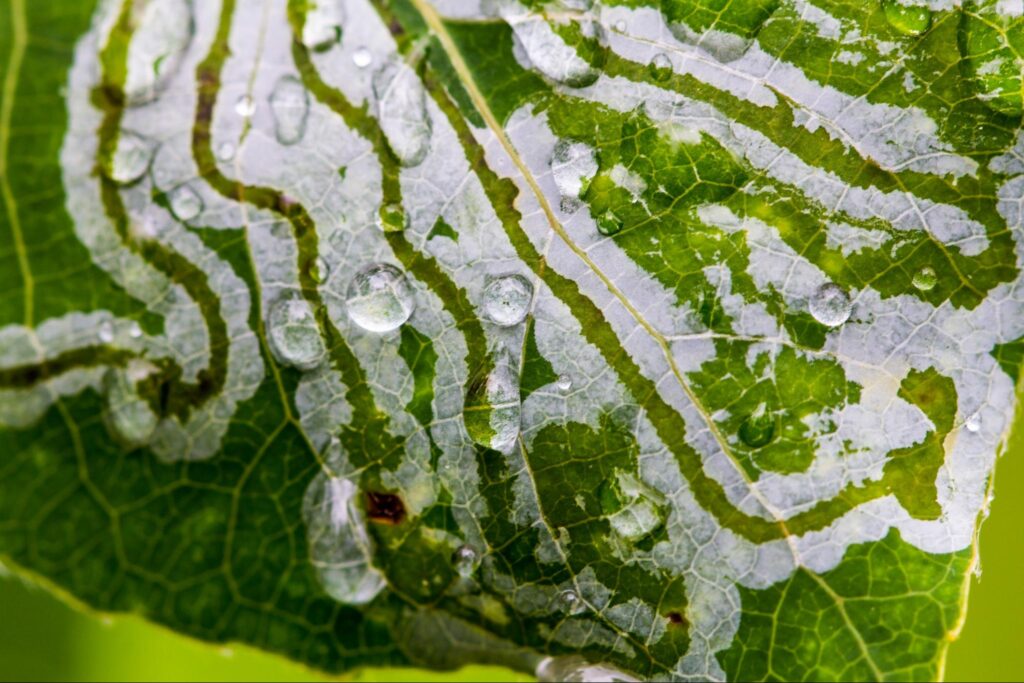
Leaf miner damage due to the feeding of leaf tissue while living in the tissues. The leaf pattern is the feeding tunnel of the leaf miner larva.
In this write-up, we will learn about leaf miners and how we can get rid of them by using the principles of Integrated Pest Management to save our garden vegetables.
What Are Leaf Miners?
Adult leaf miners are tiny flies, moths, beetles, weevils, and sawflies. The grubs or larvae of these flies mine their way through leaf tissues, referred to as serpentine mines. These mines appear as narrow, long, winding trails or blotches with varying colors—whitish or brownish.
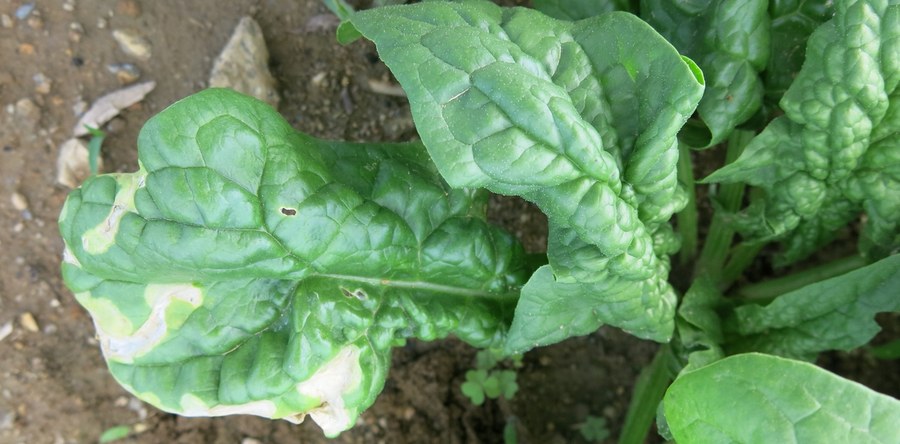
Blotch mines caused by spinach leaf miners
The larvae of various adult leafminers are creamy white, yellowish-green to green, depending upon the species of flies. Although the leaf miners do not cause any injury to their hosts and do not restrict the plant growth, these larvae feed the edible leaves of the vegetables.
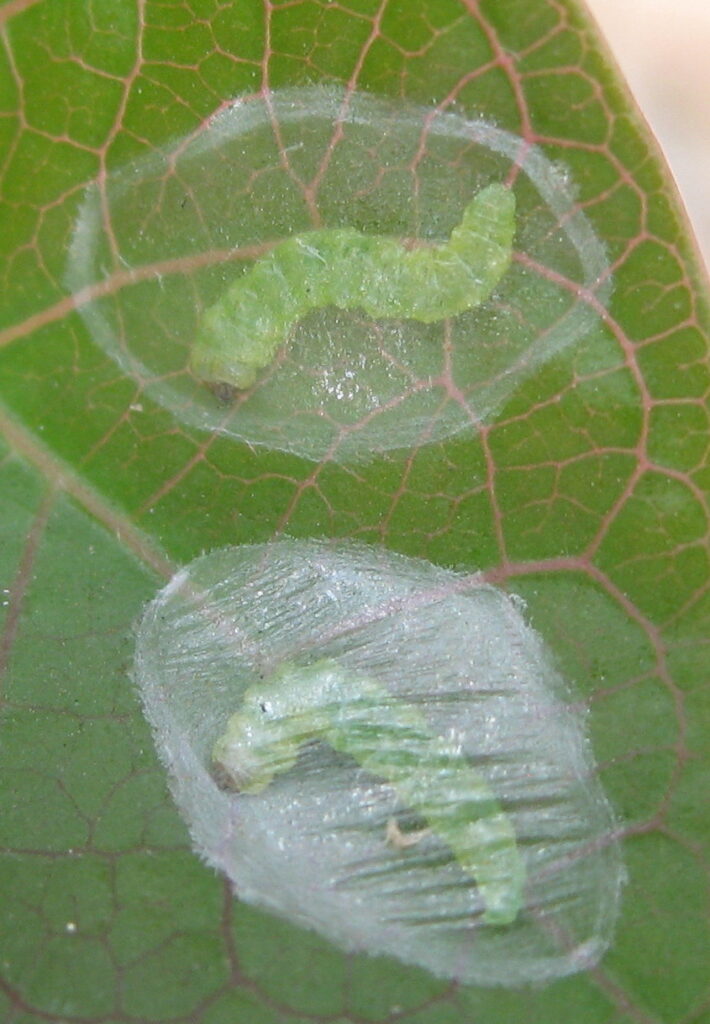
A close up of leaf miners (larvae of various flies) within plant tissues
Another Species Of Leaf Miners
These larvae are hard to notice because they live between their top and bottom layers of leaf tissues. The grubs chewed on leaf chlorophyll and left behind trails or blotches filled with their feces.
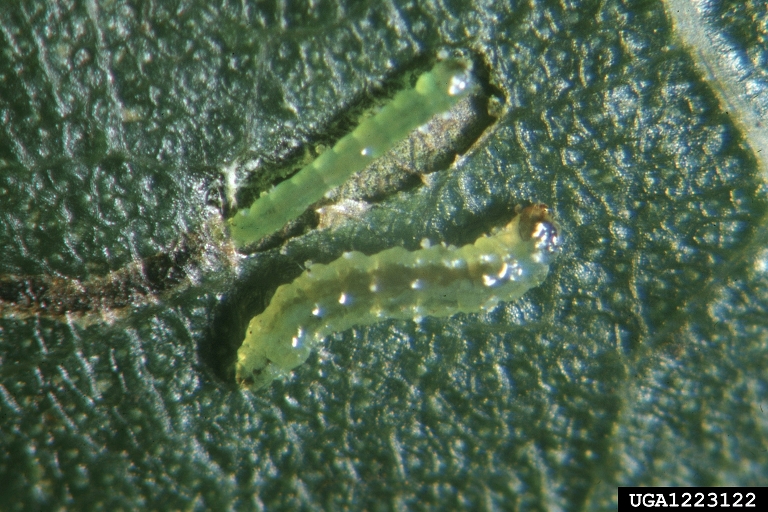
American serpentine leaf miner of yellowish-green color
Sometimes these trails are large patches with irregular shapes known as blotch leaf mines, and sometimes wind like a snake and spread over the whole leaf surface, known as serpentine leaf mines. The serpentine leaf mines slowly raise as the larvae inside tissues grow.
RELATED: How to Prevent Gnats in Houseplants? Plus Effective Tips!
Essential Characteristics Of Leaf Miners
| Common Name | Vegetable leaf miner, spinach leaf miner, citrus leaf miner, and American serpentine leaf miner |
| Distribution | Asia, Oceania, North, South, and Central America, Caribbean, Europe, and Africa |
| Unique Features | Larvae of various adult flies create tunnels or mine through dead tissue where they feed. First, these scars are opaque and later turn brown |
| Host plants | Spinach, tomato, cucumber, celery, bean, pea, potato, watermelon, beet, lettuce, pepper, and squash |
| Mode of Spread | Overwintering eggs and pupae by the import of infected plants and seeds |
| Crops at risk | Melons, onions, cotton, grains, and ornamental plants |
Leaf Miner Species
Many leaf miner species with a broader host range feed and damage the edible plants. However, these four types are most common worldwide and pose economic risks.
Citrus Leaf Miner
This pest is native to Asia and has been found in Florida since 1993. It attacks and kills all citrus varieties. The citrus leaf miner creates tunnels that cause plant leaves to curl and twist. This citrus pest is 0.25 inches long and appears to have a light tan. In addition, it causes the citrus leaves to roll over themselves during the pupal stage.
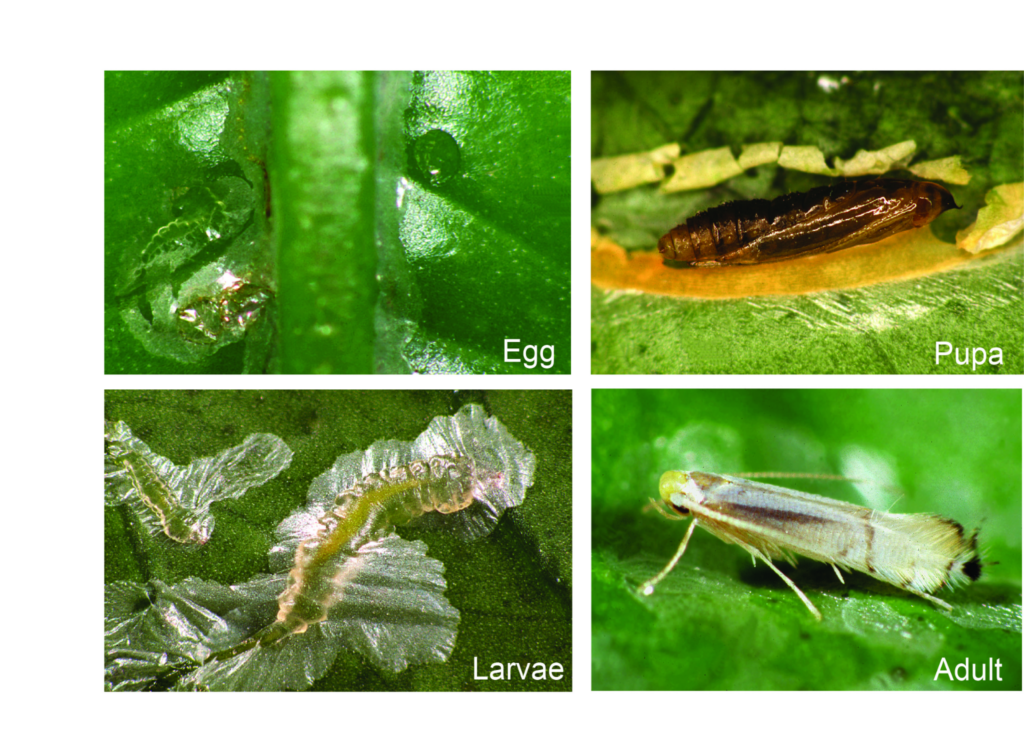
All life stages of citrus leaf miner
Vegetable Leaf Miner
These vegetable leaf miners cylindrically shaped bodies with prominent head regions and no legs. At the same time, the adult flies are 1/15th inch long and are small, and appear black and yellow. The larvae appear as light green or yellow and feed on a wide variety of vegetables. The most deadly and at-risk hosts are beans, onions, cole crops, beets, and members of the nightshade family.
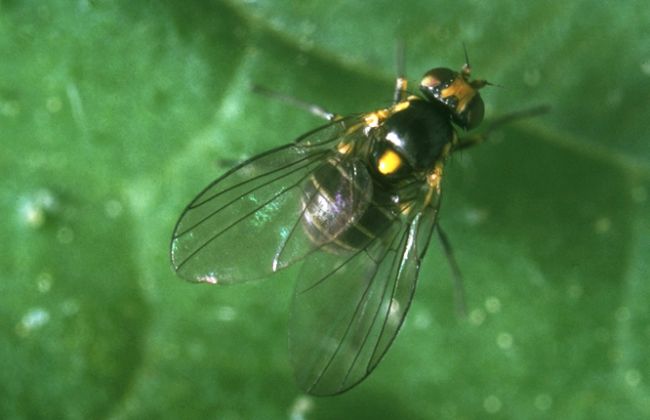
The adult and tiny fly of vegetable leaf miner
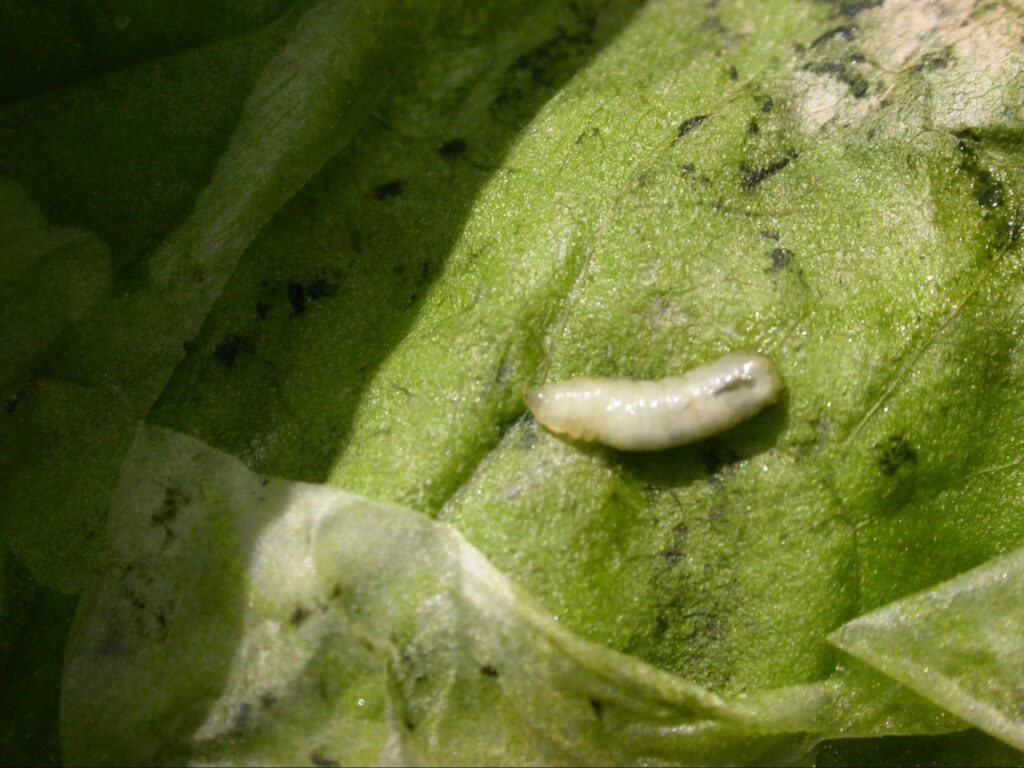
The vegetable leaf miner in action
American Serpentine Leaf Miners
These leaf miners resemble vegetable leaf miners and are native to Canada, Eastern United States, South America, and the Caribeanine.
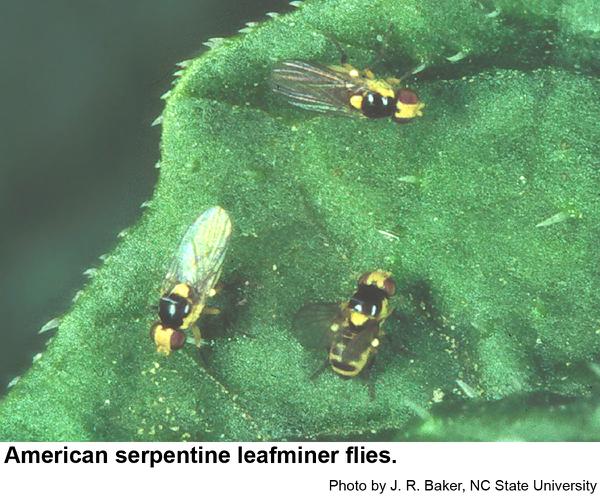
American serpentine flies
Like vegetable leaf miners, this pest also has many host plants such as aster, chrysanthemum, dahlia, daisy, marigold, petunia, mistflower, sunflower, and zinnia.
The vegetables include beans, cantaloupe, carrot, celery, cucumber, eggplant, lettuce, onion, peas, and potato. It mainly infects tropical and subtropical regions.
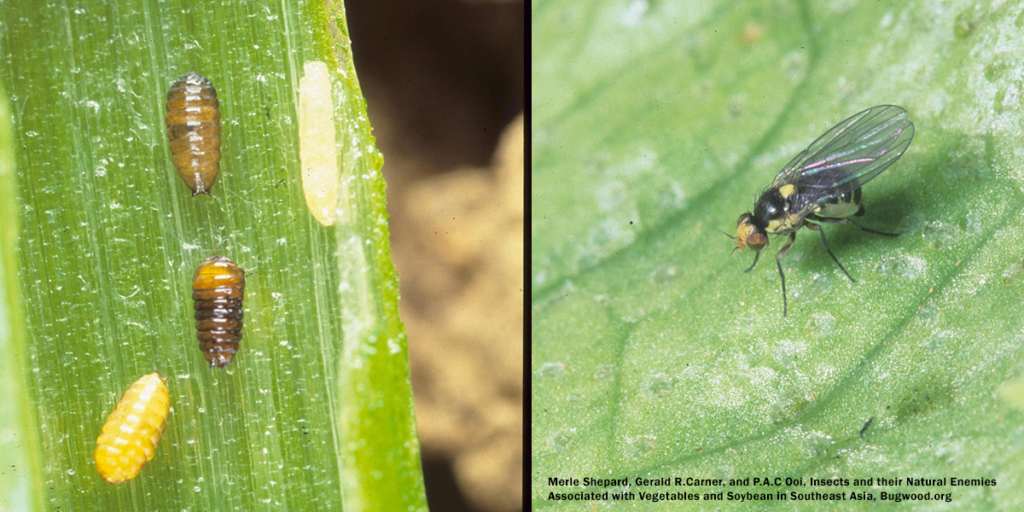
Leaf miner trails on a host plant with Larval, pupal, and adult stages
RELATED: Aphids on Indoor Houseplants: 10+ Smart Ways to Get Rid of Them!
Spinach Leaf Miners
The spinach leaf miners have creamy white body color and look similar to carrots with no legs and a prominent head. At the same time, the adult flies are 1/4 inch long, hairy, and gray or brown. The larvae feed on spinach, tomatoes, Swiss chard, cucumber, and celery vegetables.

Creamy white larvae of spinach leaf miners
The feeding activity of this leaf miner impacts the edible leaves of spinach and celery. Interestingly, they do not block plant growth, but that leaf miners’ trail reduces product quality.
Leaf Miner Damage
The feeding damage of leaf miners includes
- Defoliation of severely infested vegetable crops.
- In spinach, celery, and chard, leaf miner’s feeding harms the market.
- Interference with the food-making process by chlorophyll breakdown leads to yellowing and browning leaves.
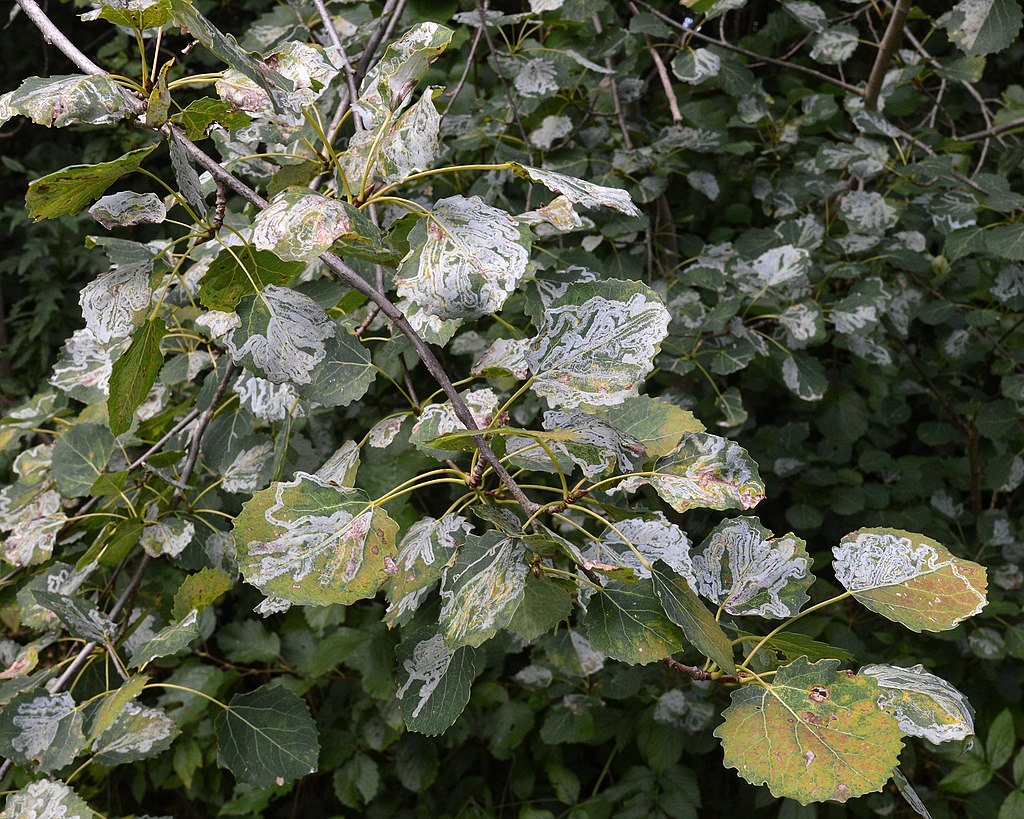
Aspen plant with severe damage on foliage by leaf miners
What Insect Causes Leaf Miners?
The adult flies of the order Hymenoptera, Coleoptera (larvae and grubs of beetles and weevils), Diptera (true flies), and Lepidoptera (caterpillars) are responsible for leaf miner infestations because these flies lay eggs on the bottom side of leaves. When the eggs hatch, the larvae feed on the chlorophyll of leaves, leading to the stopping of photosynthesis.
How To Get Rid Of Leaf Miners In Your Garden?
Leaf miners are difficult to control with insecticides and pesticides because these larvae live between the layers of leaf tissues.
Moreover, the leaf surfaces shield them from chemicals. So, to eradicate or kill leaf miners, early detection is critical. Also, integrated pest management practices are crucial for early control.
The integrated pest management practices involve
- Cultural control
- Biological control methods such as the use of natural enemies
- Chemical Controls
Cultural Control Methods
The cultural control methods consist of environment-friendly practices that prevent plants from leaf miner damage. Such as
- Regularly monitor your plants for leaf mines because the leaf miner damage mostly starts from the first true leaves in early spring.
- Carefully examine the plants for leaf miner’s eggs and hatching larvae and check ten plants in 10 locations to detect early damage.
- Always check the underside of plant leaves because these flies insert their eggs on the bottom of foliage.
- Keep your garden plants in healthy conditions. This is the best and most effective solution against leaf miner damage. Because when your plants are in healthy conditions and thriving, they can easily withstand the injury of leaf miners.
- Do not overwater and underwater your garden plants. Because a stressed plant is an easy target for leaf miner damage, balance the applications of fertilizers to avoid the stress of plants due to overfeeding or underfeeding. The healthy plants can sustain the damage and quickly revive to normal conditions.
Sanitation Is Key To Prevent Leaf Miner Damage
Good sanitation practices are the best solutions to keep the leaf miner numbers in check. Remove weeds and other plant debris from the garden because these may be hiding and egg-laying sites for pupae and adults.

Clean and well-maintained vegetable gardens will quickly fight back the leaf miners
If you find any dead fallen leaves with leaf miner trails, instantly remove them from immediate places and properly discard them. Ensure not to add these infested and damaged leaves to the compost pile. If these leaves are in the compost pile, place them in the hottest pile area to kill the larvae.
The leaf miner eggs and pupae overwinter in the soil and do not affect by the cold composting pile. If you intentionally place the garden plant debris in that kind of compost, these pests will flourish and spread throughout the garden when you harvest the compost from the pile and use it for garden beds in early spring.
Till The Ground To Remove The Pupae Of Leaf Miners
After harvesting the vegetables from your garden, remove the plants’ last and till the ground. It will help the soil in aeration, maintain the soil microbiota, and enhance its nutrition value.
Moreover, tilling practices will kill the overwintering eggs and pupae of the leaf miners. In this way, it will break the life cycle of leaf miners and protect your plants.
Row Covers
Row covers act as a physical barrier and protect your plants from adult plants reaching your plant’s leaves(these flies start laying eggs on the underside of leaves). Moreover, these covers also protect vegetables from environmental injury.
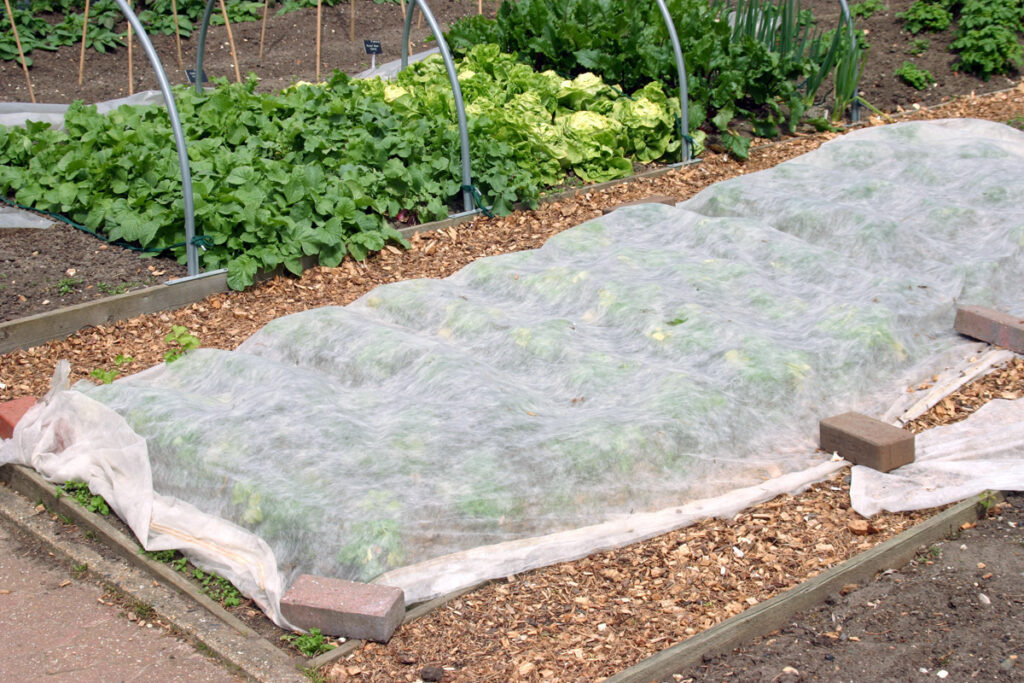
Row covers protect the vegetables from leaf miners
However, it is only effective if your garden does not have any prior leaf miner infestations; otherwise, the pupae in the soil will hatch into adults, making it difficult for growers to control them.
Crop Rotation
Another effective control against leafminers is crop rotation. Rotate your crops or vegetables in your garden for at least a year. So, the leaf miner larvae will not be able to feed on plant leaf chlorophyll and die due to starvation.
So, make sure not to rotate the one leafy vegetable crop with another green leafy vegetable because the leaf miner will infest the other crop. For example, do not plant the beets where the spinach has last year been planted.
Biological Control Methods For Leaf Miner
Leaf miners are easy to control with biological control methods because many natural enemies can eliminate leaf miner problems. Such as parasitic wasps, beneficial nematodes, and green lacewings. All these biocontrol agents protect against leaf miner damage.
Green Lacewings
Green lacewings aggressively feed on various insect pests such as aphids, mealybugs, whiteflies, and leaf miner larvae. They feed on the larvae from leaf tissues and prevent future leaf miner damage.

Green lacewings actively feed off the leaf miner and protect leafy vegetables and flowering plants
They prevent vegetable leafminer injury and other soft-bodied pests of vegetables and indoor plants.
Parasitic Wasps
Parasitoid wasps are also the natural predators of the leaf miner. They lay their eggs inside leaf miner larvae, and when larvae hatch, they start eating the leaf miner larvae from inside out. Once these larvae grow, they come out from the dead shell of leaf miner larvae.
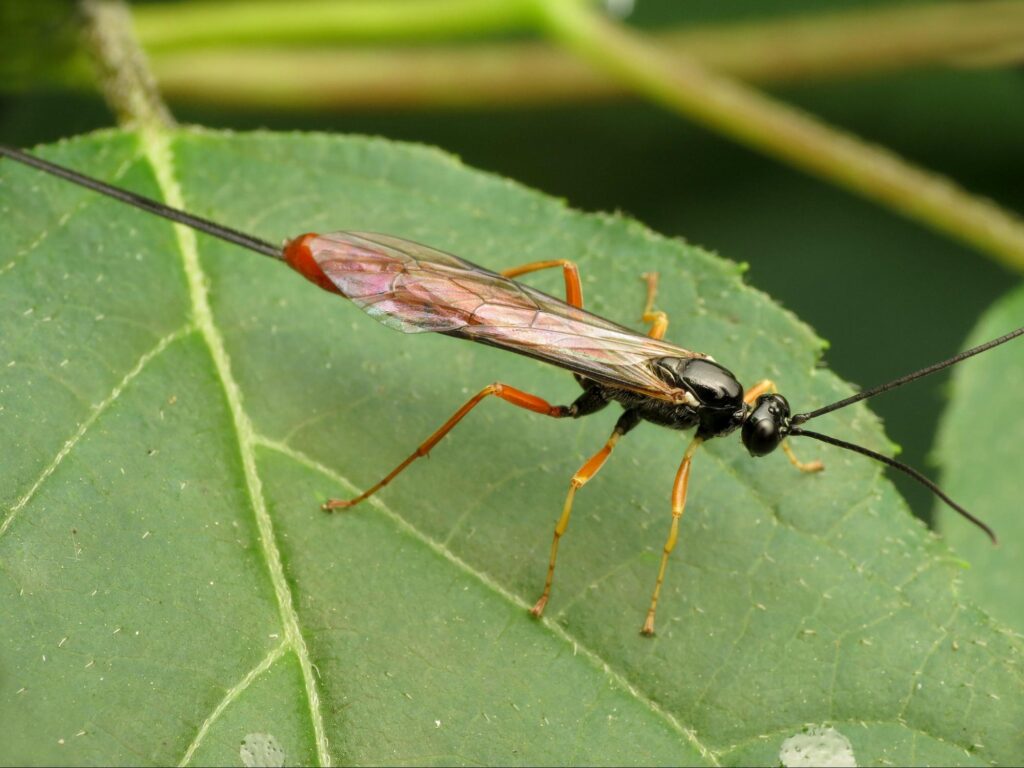
Parasitoid wasps—an aggressive predator of the leaf miner
These wasps are most beneficial over other biocontrol agents. Therefore, the Gardners should encourage the wasps in their gardens by planting flowering plants such as dill, fennel, and yarrow—they have clumps of flowers, pollens, and nectars for the adult wasps to feed.
Note: Do not spray any insecticide and pesticide on these plants; otherwise, you’ll kill natural predators on your plants.
Beneficial Nematodes
Beneficial nematodes infect the soil-dwelling grubs, cutworms, and other plant roots, harming larvae and leaf miners. They infest and feed on them, thus killing them. This is what makes them a good predator against leaf miners.
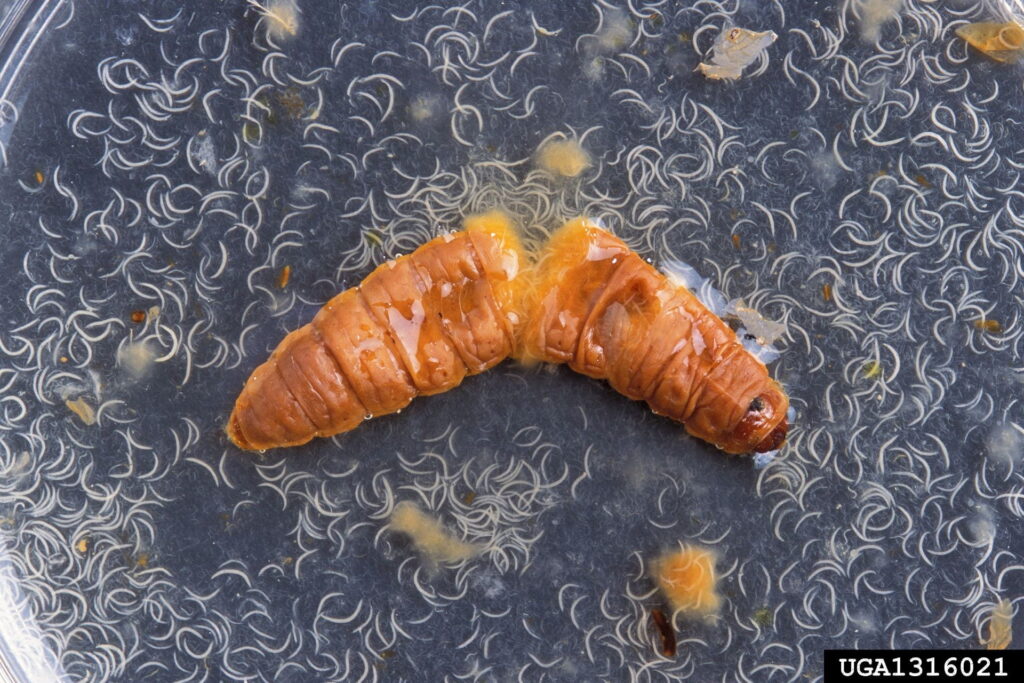
Dead and damaged grub due to intensive infestations of beneficial nematodes
Chemical Control Methods
The chemical controls are adequate in rapidly killing pests, but these chemicals also harm beneficial insects such as bees and green lacewings. Therefore, insecticides and pesticides should be a last resort with the least toxic chemicals.
Such as
Pyrethrin
The spray of organic pyrethrin-based insecticides will help control the leaf miner. These insecticides kill the leaf miner larvae as they leave the egg and enter the leaf tissue. Always use pyrethrin for spot treatment against leaf miners. Make sure the therapy also gets it on the leaf’s bottom side.
Are Home Remedies Effective Against Leaf Miners?
Yes, the home remedies, particularly with neem oil and vegetable oils, effectively control the leaf miner damage. The best way to use it is to use two cups of neem oil and two tablespoons of liquid dishwashing soap and water. Pour the mixture into a spray bottle or container and spritz on both sides of the leaves until the oil coats the leaf surfaces.
Unfortunately, the vegetable and neem oil applications coat the leaf surface, block the oxygen supply, and lead to larvae death due to suffocation.
Life Cycle Of Leaf Miners
Leaf miners overwinter as eggs and pupae in garden debris and plant litter. The adult emerges from the pupal stage in early spring and is ready to mate. After mating, the adult females start laying eggs (inserting eggs on the bottom side of new true leaves).
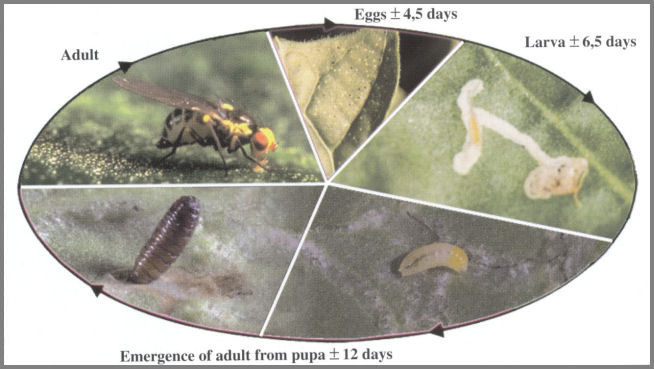
The complete life cycle of the leaf miner
The larvae hatch from eggs within a few days, make their way into plant leaf layers and tissues, and start feeding on them. After three to four molt stages, they fall to the ground and start pupation.
The pupal stage lasts for a few days and hatches to adults. Leaf miners can have many generations per year because they reproduce quickly in the abundance of host plants.
Frequently Asked Questions
What is Leaf Miner Infestation?
If you notice the snake-like trails or big blotches of no chlorophyll on your green leafy vegetables, then the 100% chances are your plants have leaf miner infestation. These are the larval stages of many beetles, weevils, sawflies, and butterflies. They do not affect plant growth but impact the edible plants and their cosmetic value. So the best way is to control them through Monterey garden insect spray.
What Plants Do Leaf Miners Eat?
Leaf miners have a more comprehensive host range from fruit trees to shrubs, vegetables, and ornamental plants. It includes green leaf vegetables (tomatoes, beans, beet, potatoes, cabbage, cucumber, spinach), citrus trees, and the nightshade family members.
What is the Best Treatment for Leaf Miners?
The best treatment for leaf miners is the establishment of biocontrol agents, mainly green lacewings, ladybugs, parasitoid wasps, and beneficial nematodes (do not confuse it with the root-knot nematode, which is a pest).
Sources for Further Reading
- Planet Natural. (2022b, April 3). Leaf Miner Control. Retrieved April 16, 2022, from https://www.planetnatural.com/pest-problem-solver/houseplant-pests/leafminer-control/
- Hahn, J. (2020). Leafminers in home gardens. UMN Extension. Retrieved April 16, 2022, from https://extension.umn.edu/yard-and-garden-insects/leafminers
- Leaf Miners. (2022, April 4). Penn State Extension. Retrieved April 16, 2022, from https://extension.psu.edu/leaf-miners
Do you know of other tips on how to get rid of leaf miners? Comment below. Also, check out our other articles:
‘Common Types of Houseplant Bugs: Who They are & How to Get Rid of Them?
10+ Natural Pest Control for Houseplants to Protect Them from Insects and Diseases
An All-In-One Guide to Small Brown Bugs | Fun Facts, Pictures and Identification Guide







